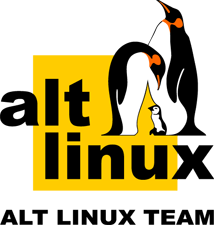Even more prizes! See updated list!
Do you like birthdays? Do you?
I do!
So I like the idea that this blog will be celebrating its first year birthday soon, on the 14th of October.
We all like birthdays because it is a good reason for presents.
Of course, any presents for this blog are welcome.
But I'd like also to announce that some presents will be given away. All you need to do is to take part in competition.
There will be 2 competitions this time.
Both will end up on the 15th of October and results will be announced soon after.
Let's start...
Competition number one requires your artistic skills.
This blog lacks a logo, as you can notice. So, please use your drawing skills, GIMP, Inkscape, LibreOffice Draw or any other editor to create a logo.
To take part in competition, please send your variants to linuxblog-competition@darkduck.com
Your work should be licensed under Creative Commons license and not copyrighted by you in any way. It means I should be able to use image by any method I like.
The logo will be used for branding the blog (title and favicon), Twitter account, Facebook page. So, you can suggest different sizes and resolutions if you want to. But one image will also do, because I can resize image myself when needed.
There will be only one winner, although I may publish several images when I end up the competition and announce results.
What is the prize? Winner will get:
- Winner will get book from Linux Blog Book Shelf - see it in the left column. Book should be priced at 20 GBP or below.
- 1GB USB stick branded with logo of famous magazine. Not Linux-related though...
- CD or DVD with Linux distribution from the Buy Linux CDs site or any of your choice.
- Acknowledgement of image author on this blog.
You need to have Facebook or Twitter account to take part in this competition.
- Twitter user: Please tweet following text:
I like to read Linux notes from DarkDuck http://goo.gl/PLquM and Buy Linux CDs http://goo.gl/sWBak @linuxnote
Clicking on link above simplifies your job. Please do not change the text or links - only tweeters with exact quote will qualify for final draw. You do not need to be follower to qualify, although I appreciate if you follow me on Twitter.
- Facebook user: simply like this blog using the button on your right. If you have already done this, you automatically qualify, even though you could let your friends know one more time by some method that you like this blog.
Final draw will include both Facebook and Twitter users and who completed the task. You can have 2 entries into the draw if you have Facebook and Twitter accounts both. Winners will be selected by random choice between all contestants.
What will be the prizes?
- Winner will get 8Gb USB stick and CD or DVD with Linux distribution from the Buy Linux CDs site or any of your choice.
- Runner-up will get 1Gb USB stick branded with logo of famous magazine (non-Linux) and CD or DVD with Linux distribution.
So, Ready... Steady... Go!
Competitions are now open!





